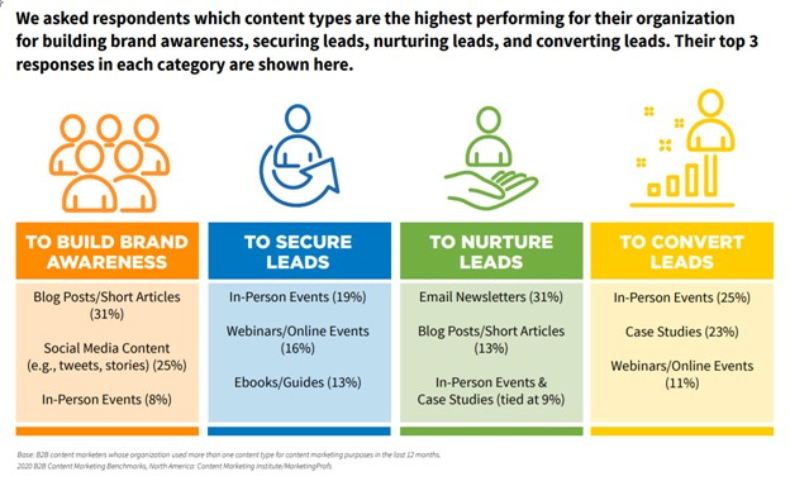You might think that having the lowest prices or the most unique product is the key to success when competing in the B2B marketplace. But another important factor— customer experience—cannot be ignored.
Even if you have the cheapest options or you offer an in-demand item, a bad experience can put off customers and send them to your competitors.
By moving to a customer-centric approach, you can grow your customer base and stay at the top of your field. But how to begin?
Here are five tips for enhancing your B2B company's customer experience.
1. Analyze your current state
Though it can be tempting to just dive in and overhaul your entire approach, doing so won't get you anywhere. Your efforts must be based on accurate data. Spend time researching your customer base: their needs, their irritations, and their behavior. You can do that in a few ways:
- Look through sales records. See where your customers are spending their money. Pay extra attention to repeat sales.
- Ask your customer base directly. Send out surveys and see what responses you get.
- Look into industry statistics. Make sure that what you're offering is suited to what's needed.
- Monitor your online store. Use Google Analytics to see how well your website is performing, and for which products.
- Talk to your sales reps. Find out what they get called about most often.
Those details will give you a good starting point for understanding what to change.
If you discover that your sales reps regularly get calls about a particular product, focus your attention there. Likewise, if you notice that certain products aren't selling, it might be worth it to remove them and spend more effort elsewhere.

Source: "The Customer Experience in B2B... It's Behind the Times"
2. Use omnichannel strategies
Increasing the number of platforms on which your business is available will increase the chances of customers' arriving in your sales funnel—the process of converting browsers into buyers.
Unfortunately, many companies fall into the trap of being accessible on many platforms but establishing no links between them, which can be confusing and make it harder for customers to place orders or subscribe.
Follow an omnichannel strategy that ensures all of the platforms you use are linked to each other. Each channel should be unified and connected to every other so that you deliver a seamless experience whenever and however a customer contacts you.
For instance, a client who has previously communicated by live chat or emails may call one of your agents. If you use a genuine omnichannel platform, your agent will have immediate access to those previous messages. As a result, the client will have no need to go over the same information, will immediately feel like your team is on the ball, and will enjoy enhanced CX.
Though an omnichannel strategy does require initial investment, it's a great way to be customer-centric because you come to where clients already are instead of waiting for them to approach you.
3. Personalize the B2B customer experience
Converting new prospects into buyers is important, but so is retaining them. Small changes can make a big impact; they can encourage customer loyalty and keep your customers coming back instead of looking elsewhere. They can also translate into more referrals, and therefore increase your customer base.
Here are some simple things to start with:
- One-click subscription renewals: Allow clients to easily renew or extend a subscription instead of treating them like a new customer.
- Personalized offers: Customize your email marketing based on your customer's use of your product or service. You might, for instance, offer a free limited-time upgrade to a premium offering.
- Related information: Share e-books, whitepapers, or other resources pertinent to the products that a client uses.
- Loyalty rewards: Give money-off for a subscription, a discount on a related service, or another alternative.

Source: " B2B and Content Personalization: Where We Are, Where We're Heading"
There are ways to personalize B2B customer experiences beyond online platforms as well. Look into those methods using the same data you found when analyzing your business.
4. Try new marketing methods
Many B2B companies approach marketing strategies as if they're communicating with other companies. Although that is technically true, the person responsible for making purchases at those companies is just that: a person. Buyers are more like standard consumers than we might imagine, and they likely have expectations based on their experiences with B2C companies.

Source: " 2020 B2B Content Marketing Benchmarks, Budgets, and Trends"
Look into how B2C companies approach their marketing—social media presence and email campaigns, in particular. Test new approaches and gather data on their success rates. Test one thing at a time to ensure the data you get is directly related to your efforts; that way, you can narrow down what works and what doesn't.
5. Be available 24/7
Most B2B companies have a global clientele, which means customers in a lot of different time zones. Making sure you're available—at least in some capacity—24/7 goes a long way toward enhancing the B2B customer experience.
Technology can help. With a VoIP phone system, for example, you can hire customer service agents to work from all around the world. Depending on the time of day, customers will get routed to those agents who are on shift and available.
Of course, it's impractical for some businesses to have a call team working at all hours, but that doesn't mean you can't offer some method of communication. Having a chatbot or automated scheduling service on your site can keep customers satisfied. Such channels can either resolve queries or assist clients until someone is available in person.
Automated scheduling software allows customers to book appointments without relying on the availability of staff by showing your staff's work schedule and open meeting times. A chatbot can assist with common queries, and either direct people to appropriate information on a website or record the details of a question for future reference. Linking the two can even allow customers with queries to schedule a call-back so they don't have to keep trying the phone lines.
* * *
Of course, the above tips should be applied on top of the effective strategies you already have. Not all customers will want to change how they interact with you—which is why the initial step of analysis is so important! Being customer-centric also includes catering to those who are happy with existing methods of interaction. Don't overhaul things so drastically that these people get left behind.
By blending the steps in this article with your current methods, you'll draw in a new customer base while keeping your repeat customers satisfied.
More Resources on B2B Customer Experience
Five Tips for a More Personalized B2B Content Strategy in 2021
For Outstanding Buyer Experiences, Think Big but Start Small
How to Use Voice of the Customer in B2B to Improve CX and Increase Engagement




